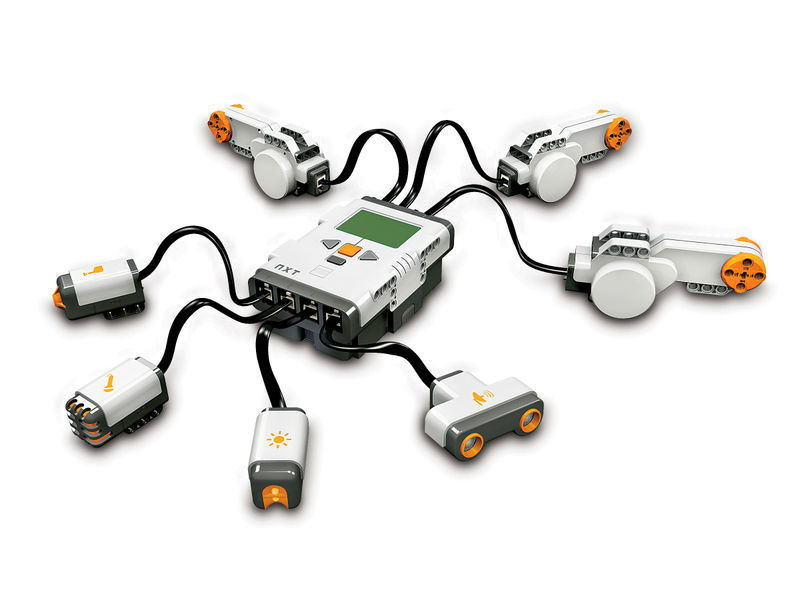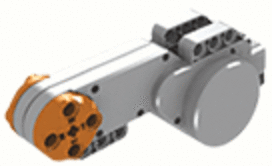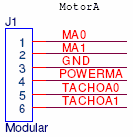NXT: Sensors and Actuators
Sensors and actuators can be connected to the NXT controller through
the four input ports and three output ports:
In the following we describe the different kind of LEGO sensors and
actuators
that can be connected to the NXT, the connection cables needed, the
internals of the input and output ports, and how sensors and actuators can
be accessed through methods in the Java classes of leJOS NXJ.
Sensors
The NXT controller has four input ports labeled 1, 2, 3 and 4, Figure
1. Sensors
can be connected to the NXT through these input ports. The LEGO
sensors can be divided into two categories of sensors: NXT sensors
and RCX sensors. These two classes of sensors are physically connected to the
input ports in two different ways.
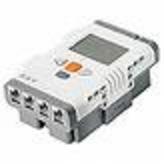
|
|
Figure 1 The four NXT Input Ports.
|
NXT Sensors
At present there are four NXT sensors available from LEGO: Light sensor,
ultrasonic sensor, touch sensor and sound sensor, Figure 2. These are
all connected to the input ports by means of the NXT cable, a six
wire cable with RJ16 connectors in both ends, Figure 3.
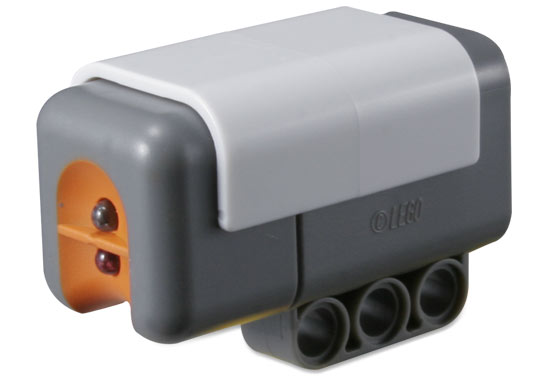
|
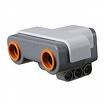
|

|
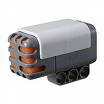
|
|
Figure 2 Four different NXT sensors.
|
RCX Sensors
There are five different RCX sensors available from LEGO: Light,
temperature, angle and two touch sensors, Figure 4. These sensors were
developed for the RCX and they all use a two wire cable with 2x2
el-plate connectors in both ends for connection to the RCX input
ports.
To connect these sensors to the NXT the converter cable as shown in
Figure 5 is needed.
Input ports
.
Actuators
The NXT controller has three output ports labeled A, B and C. Actuators
can be connected to the NXT through these output ports. Just as with
the LEGO sensors the LEGO
actuators can be divided into two categories of actuators: NXT actuators
and RCX actuators. These two classes of actuators are physically
connected
to the
output ports in two different ways.
NXT Actuators
At present there is one NXT actuator available from LEGO:
a motor, Figure 7. NXT motors are
connected to the output ports by means of the NXT cable of Figure 3.
RCX Actuators
There are several types of RCX actuators available from LEGO: lamps and
motors, Figure 8 and 9.
These actuators were all
developed for the RCX and as the RCX sensors they use a two wire cable with 2x2
el-plate connectors in both ends for connection to the RCX output
ports.
To connect these actuators to the NXT the converter cable as shown in
Figure 5 is needed.

|
|
Figure 8 Two LEGO lamps.
|
Each motor has its own
characteristics with respect to power consumption, rotations per
minut etc. Philippe Hurbaine has made a very detailed investigations of
LEGO motors including the NXT motor.
Output ports
References
Hardware
Developer Kit
Philippe Hurbain,
Custom NXT Cables
Philippe Hurbain,
LegoŽ 9V Technic Motors compared characteristics
Last update: 18-09-07
